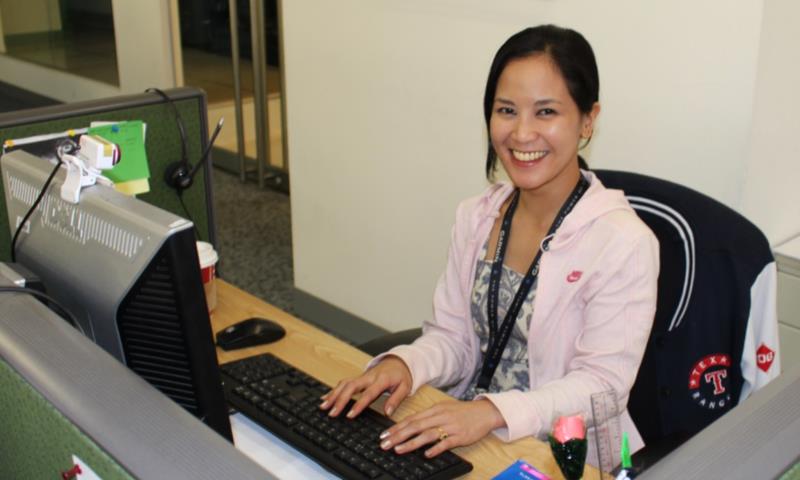WHILE the Covid-19 pandemic rages, punctuated by the arrival in the country of the highly transmissible Omicron variant, unemployment in the Philippines continue to be a concern. In December 2021, unemployment rose to 6.6 percent, a tad higher from 6.5 percent a month earlier, the lowest since January 2021, while unemployed Filipinos stood at 3.27 million compared to 3.16 million in November.
Covid-19 continues to be a hot topic, and so is the elections, which is now on a frenzy as the official campaign period started early this week. Realistically, amid all the election brouhaha, unemployment continues to be a threat to the lives of Filipino workers and even companies and those in the service contracting industry, who direly need their workers to come back.
For its 390th General Membership Meeting (GMM) held recently, the Philippine Association of Legitimate Service Contractors (PALSCON) decided to talk about the enduring threat of Covid-19 as one of the GMM’s topics, and how the association will look forward to dealing with the disease now and in the future when it would simply burn out and just be a painful memory in our history.
First things first: Omicron
Fr. Nicanor Austriaco, a Filipino-American molecular biologist and priest, confirmed his belief that it is the beginning of the end of the pandemic. He said there’s a growing consensus among scientists around the world that Omicron, in fact, will lead to the beginning of the end.
Now what happens after Omicron?
In the more likely endemic Covid-19 scenario, Fr. Austriaco said Omicron will be a milder variant than Delta and be a dominant variant in the Philippines and eventually globally, will infect both vaccinated and unvaccinated, and will make the immunological memory of the people against Covid-19 be more robust.
Pointing to the Institute for Health Metrics and Evaluation (IHME), one of the best pandemic modelers in the US and in the world, Fr. Austriaco said the group forecasts that by the end of March 2022, half of the world will become infected with Omicron. In the Philippines, IHME estimates that 55 million Filipinos will be infected with Omicron, but according to the National Vaccination Operations Center (NVOC), 55 million Filipinos are already fully vaccinated, which means a significant number of the population are already protected against Covid-19. So, just like the Spanish flu, Omicron is burning itself out, and in a few months, there will be no more to infect that’s why the surge is dropping dramatically, particularly in the National Capital Region (NCR).
But Fr. Austriaco reminded that the national government should finish the target of vaccinating 90 million people by the end of the second quarter, and make sure that there are enough anti-viral drugs that those who will get Covid-19 will be properly treated. “Once these are in place, we can begin to relax and return to the way we deal with influenza.”
In an endemic Covid-19 environment, Fr. Austriaco said that what it will look like is that most people will eventually get Omicron when their natural or vaccine-acquired immunity wanes “but it will be mild for you because you have been vaccinated and boosted so your body has learned how to fight Covid-19.” However, it may still cause hospitalization and death for vulnerable patients like the elderly and immunocompromised so they have to be vaccinated and boosted on a regular basis. “What scientists are looking now is having an Omicron-specific vaccine to complement the other vaccines. Yearly, Omicron will become milder and eventually, we would just learn to live with it.”
Fr. Austriaco said that eventually, people would need to take anti-viral drugs like molnupiravir and paxlovid and other therapies to mitigate hospitalizations and death. And in an endemic Covid-19, the concern for it will shift from the public to the private sector, just like the flu. “When that happens, people won’t go anymore to the local government unit to be treated but in a clinic, then buy drugs at the pharmacy, go home and rest, or even get vaccination through a doctor. Eventually, we will move to no more lockdowns or no social distancing, and the last to go will be no more masks.”
But for the less likely scenario, future Covid-19 variants can be more transmissible and severe, leading to a pattern of mild and severe surges, and that the country will remain in a state of emergency in the near future. However, he cited a “mutational landscape analysis” posted online late December 2021 which concluded that it would be very difficult for a scarier variant to evolve because of Omicron. This led Fr. Austriaco to say that Omicron is the beginning of the end because it causes a significantly milder disease, it infects more people thus increasing immunological memory and less likely to create a scarier variant capable of immune escape, so it’s going to be a “blessing in disguise.”
However, he cautioned that Omicron is still deadly so people should be vaccinated and boosted to provide protection even against “long Covid,” where Covid symptoms linger, from six months to as long as a year. People should also continue to mask, observe minimum public health standards, strengthen the health-care system infrastructure, and purchase anti-viral drugs and therapies for those who may get sick.
“Right now, we must move from crisis mode to control mode; we must move from fear to responsibility.”
Moving forward
Alexander Chichioco, PALSCON secretary General, said they decided to digress a little by discussing Covid-19 in their GMM to keep themselves informed. “Even at the start of the pandemic, PALSCON has always been informed and updated of the effects of the virus on the health of our workers, as well as ours and also our livelihood. In this way, we can provide our members vital information on how to pivot to this new normal.”
Majority of industries and associations were affected by Covid-19. Business, of course, slowed down, Chichioco said, with closures and shutdowns of companies. As part of its Covid-19 response, PALSCON helped its members through linkages with the national government and local government units for some financial assistance and even tax breaks.
Chichioco said PALSCON’s mindset now is to look forward to a better normal and let the “old normal” stay behind them, while they address issues like crises management, business rebound and even their preparedness to the world of artificial intelligence (AI).
However, he said their yardstick in work performance whatever the environment in a post-Covid era, whether work from home, face to face, brick-and-mortar or traditional business transitioning to an online or digital business, will still be efficiency and effectivity in the work place.
“Change is the only constant in life and that should always be our mindset. In our service contracting business, we should always be ready to adapt to change, be innovative and creative in finding ways to improve, upgrade and even reinvent our business and even ourselves. This way, we evolve and address the changing needs of our clients and even discover in the process a by-product or new service that would complement the industry.”





































